The information hear in was gathered from multiple on line sources,reference books and my personal observations.
Permission and licencing was not granted from Great Britain to produce the Mk II in Canada till late in 1939 or early 1940 and the official Procurement of Canadian versions of the British Mk II helmet was initiated on January 25,1940, Some 1,131,600 shells were produced between 1940 and 1943 with the first contracts being awarded on May 25 1940 there were only three manufacturers that produced the Mk II shell in Canada during this time frame .
Manufacturers :
The Canadian Motorlamp Company of Windsor Ontario :
There helmet bodies were marked ( C.L./C. ) followed by the manufacturers date and a numerical batch code number .
All helmet shells manufactured by C.L./C. were designated helmet body Mk II but are not stamped as such on the shell as found with Mk II's produced by G.S.W or A.G./C which are clearly marked with the Mk I prefix .
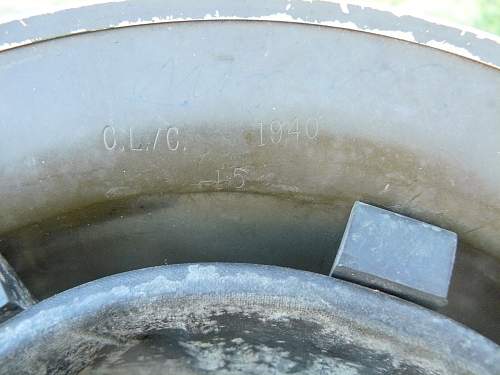
General Steel Wares of Toronto ( G.S.W. ) followed by a letter or sequence of letters to indicate the steel batch code and the date as the official Canadian designation for the helmet bodies was Body Mk I to helmet steel Mk II G.S.W stamped Mk I on its helmets shells.
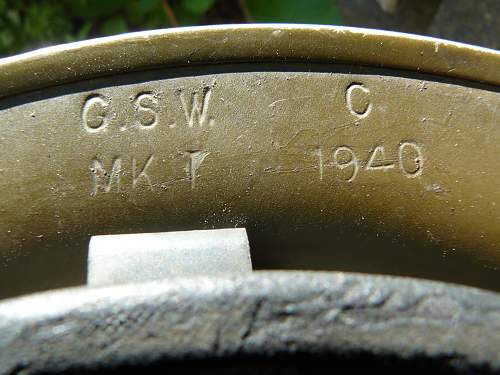
Aluminum Goods Company of Toronto ( A.G./C.) followed by a letter and number sequence to indicate the steel batch code and the date and these helmet shells as well are designated body Mk I and will be stamped as such on the shell the vast majority of the helmets manufactured by A.G./C. were produced under contract for the R.C.A.F
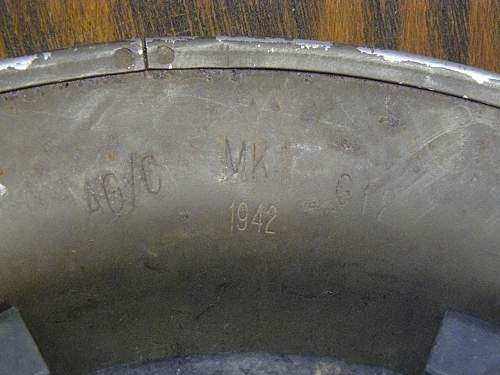
It is not uncommon to find Canadian Civil Defense Mk II helmets ie...A.R.P,Warden,Fire,Police,manufactured from combat grade materials( non-magnetic Hadfield manganese steel ) as contracts were not awarded for a mild steel variation for civil defense use until mid 1942.
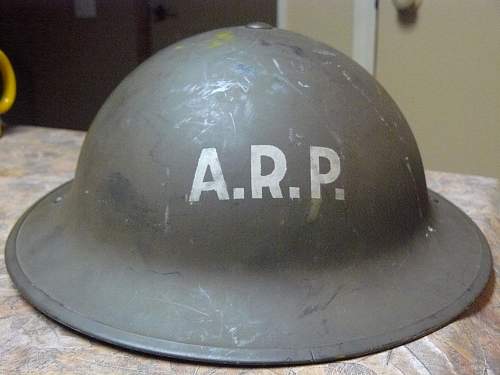
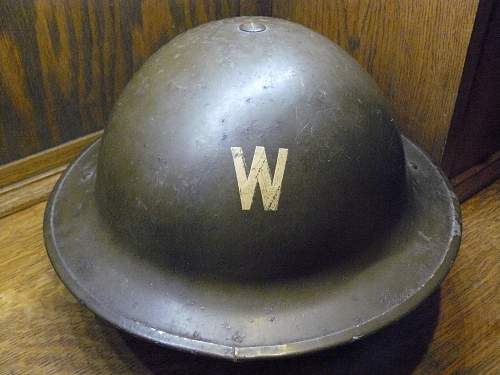
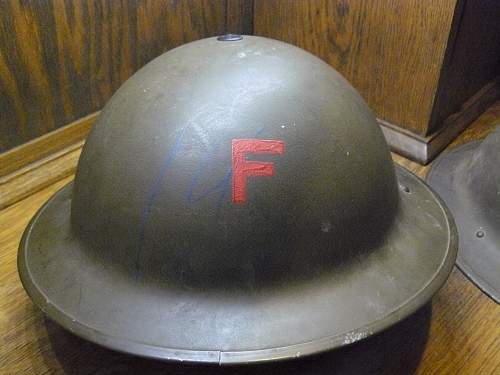
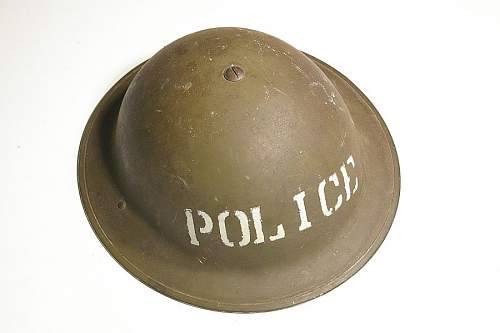
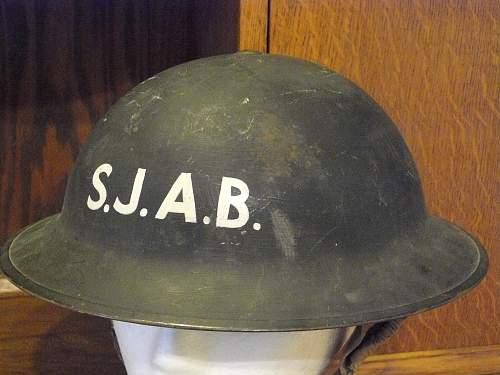
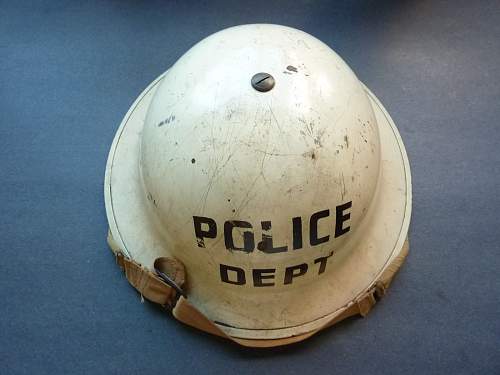
G.S.W. manufactured shells for the Department of Pensions and Health for use by the Air-Raids Precautions Service (ARP). These have their lugs,welded and not riveted to the rim.
consequently all helmet shells produced by this maker from mid 1942 and on will only be manufactured from mild steel ( magnetic) .A.R.P. helmets have no date or batch number and are marked G.S.W. DP&H
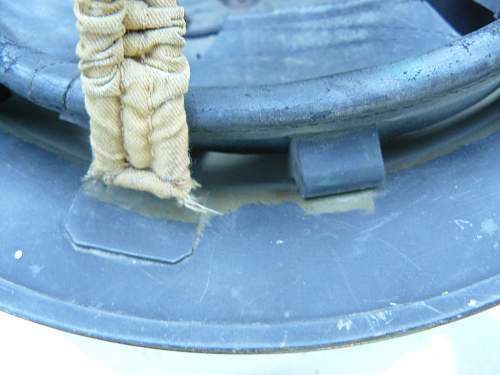
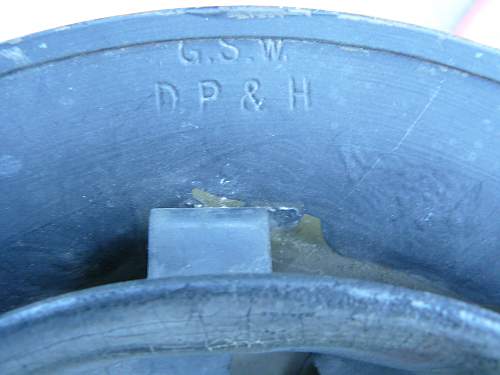
A Canadian Mk II shell exists of particular interest these shells are to be found with no manufacture mark date and or a steel batch code stamped to the interior of the shell all these are constructed of non magnetic Hadfield manganese steel which denotes them as combat grade shells. From the way the rim ends are joined on the on the helmet body in comparison to the C.L./C and or the AG/C shells and from the later war olive khaki paint there construction can date no earlier than mid 1942 IMO these shells were produced by General Steel Wares (G.S.W.)
I currently have two such helmets in my collection these helmet bodies are suspected of not meeting quality control standards and are thought to have been sold off to the A.R.P. services to be used by the civil defence network in Canada.
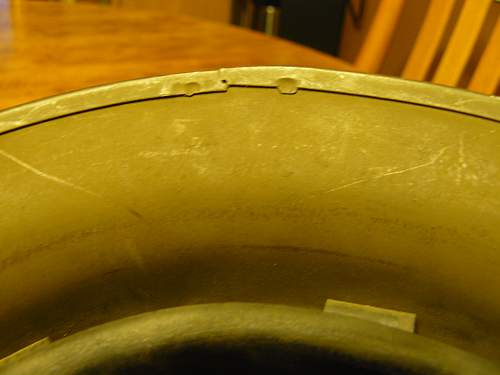
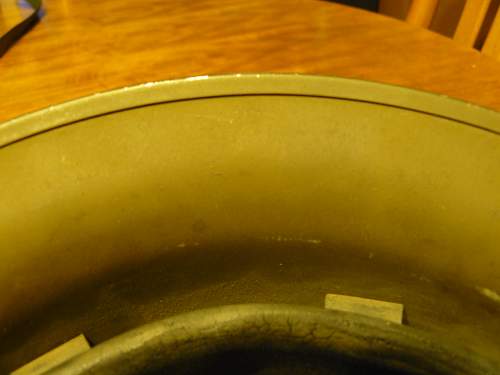
One last interesting anomaly worth mentioning I have a 1940 dated C.L./C. Mk II steel batch code 7 in my collection that has a very small C-/l\ stamped in the steel on the exterior of the shell right next to the helmet lug retaining rivet to date I have only seen three other early C.L./C. helmet that bare this stamp and IMO this was only done for a very short period of time and possibly only on the original first contract order of the first 25.000 shells.
All the examples I have seen that bare the small C-/l\ mark on the exterior of the shell are dated from 1940 and have very low steel batch numbers the Canadian Motorlamp Company used consecutive numbers through out there entire production run from 1940-1943 and as there is no documented information available on how the steel batch codes correlate to manufacturers dates and or production runs one can only speculate as to when exactly in 1940 these helmets were produced .

The C-/l\ mark will be found stamped or printed on Canadian field gear and equipment and as such there exists many examples of Canadian Mk II helmets that bare this mark in the form of an ink stamp on the interior of the shell for the most part found near the dome
The stamp is not evident on every shell mind you and I speculate that possibly only so many shells were inspected from each steel lot and thus stamped.
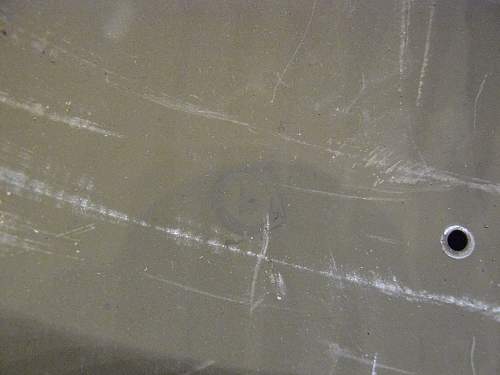
Chinstrap Lugs :
The Canadian Mk II adopted the British 1939 style of the square chinstrap lug with clipped corners and manufactured them with out change through out it 1940-1943 production run

All Canadian produced Mk II shells have been base sprayed in khaki green.
The shells that were produced from 1940 to early 1942 tend to be painted in a browner shade of khaki compared to shells from mid 1942-1943 which are base sprayed a more light olive drab to illustrate the color difference between the earlier and later war base coat of khaki that was used I have included three images of Mk II helmets from m collection.
1# 1942 dated C.L./C. in the later war light olive drab
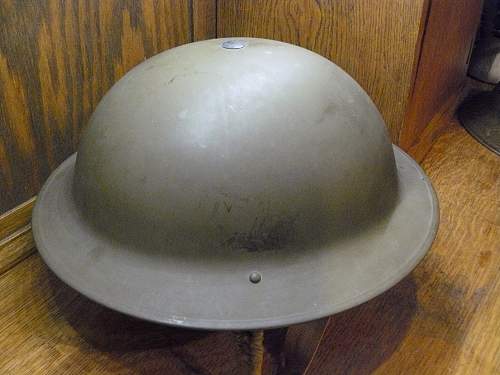
2# 1940 dated C.L./C. in the earlier shade of khaki brown
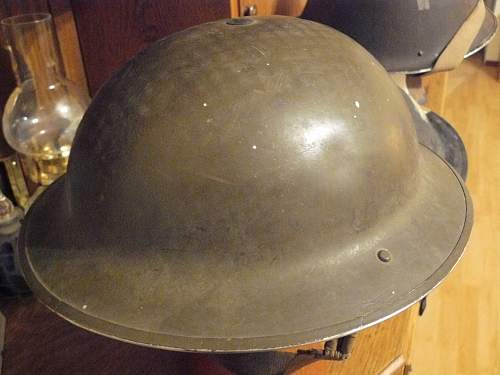
3# 1941 dated G.S.W. in the earlier shade of khaki brown
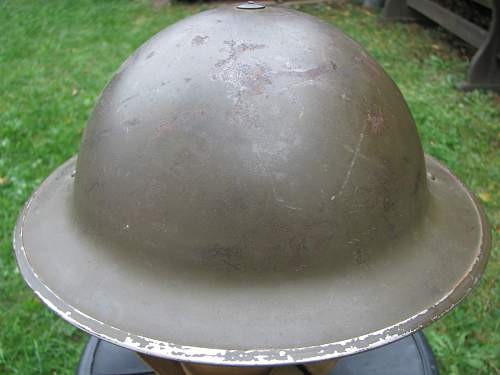
There of course was also a wide variety of field painted camo schemes ranging from sand textured,desert tan painted (Italian campaign ) and two and three tone painted camos I have included a few helmets from my collection to help illustrate the wide varieties that are out there.
British helmet shell with Canadian liner with Swirl type of camo as found on helmets used in the theater of operations in the Mediterranean ,Italy and or S,W Europe this helmet came to me as part of a grouping to a Canadian vet who served with the RCA,5th-LAA in Italy
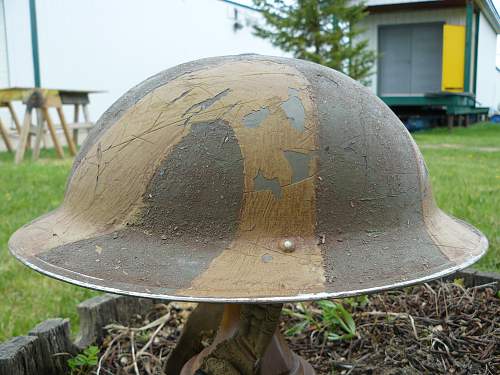
Three tone green and brown camo brush painted on a 1941 dated C.L./C.
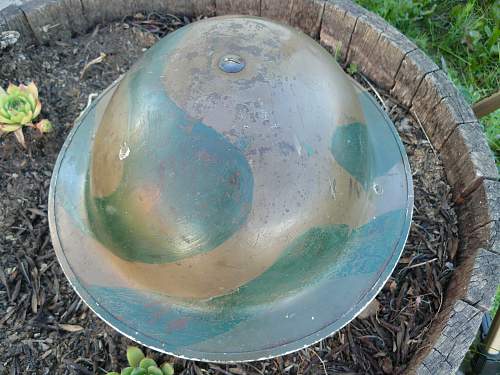
Heavy sand textured camo on a 1941 dated C.L./C.
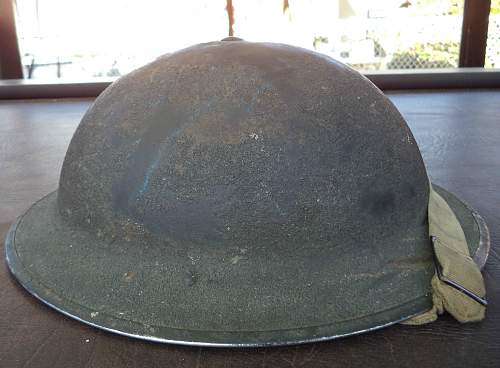
Odd green coloured camo over painted 1941 dated C.L./C.
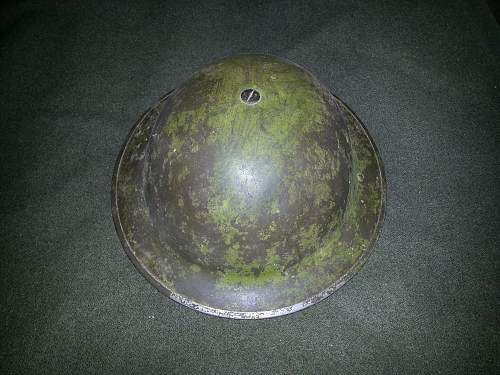
A very odd and controversial black and white painted Canadian Mk II that I suspect as being a camo the manufacturers mark and date are covered by heavy textured paint but from the chinstrap retaining rivets the but joint and spot welds on the rim IMO it was produced by G.S.W.
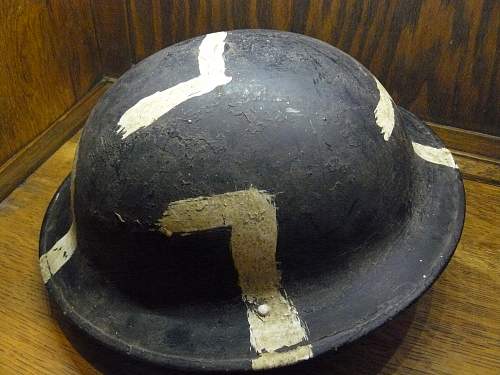
And a 1942 dated C.L./C. brush painted in desert tan (Italian campaign).
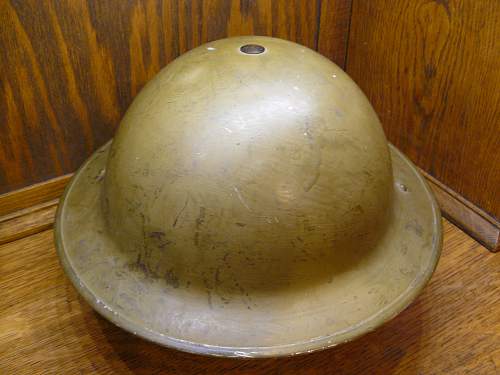
There are many period images from 1940-1945 shown of Canadian soldiers wearing camouflage nets on there helmets for the most part there were three types of camouflage nets produced in Canada the earliest nets were manufactured in either olive green or khaki and are quite rare but by late in 1942 a new two tone brown and green net was approved for use by the troops all the above nets mentioned were manufactured in one of two ways and variations can be seen in a tight woven mesh and or a more economic knotted design which was meant to speed up the manufacturing process and meet the demand of the troops heading to the theater of operations.
1# Early first variation woven lime green Camouflage net.

2# Early first variation woven brown and green two tone net.

3# late war second variation knotted string style brown and green two tone net

Canadians used various types of scrim on there Mk II camouflage nets ie..sand bags,tan or multi colored burlap, green and brown oil cloth ( America cloth ) cotton and or wool cut from strips of uniform shirts, storage bags for mess tins to white sheets for the use as winter camouflage to mention a few posted below are a few examples of scrim from my collection.

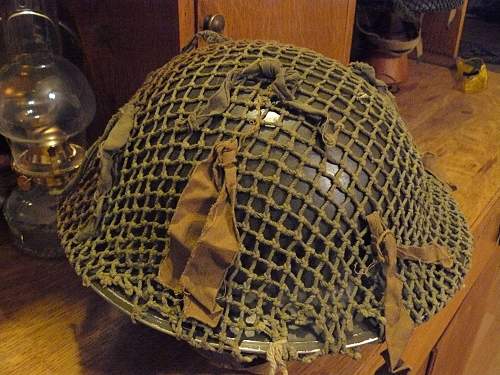
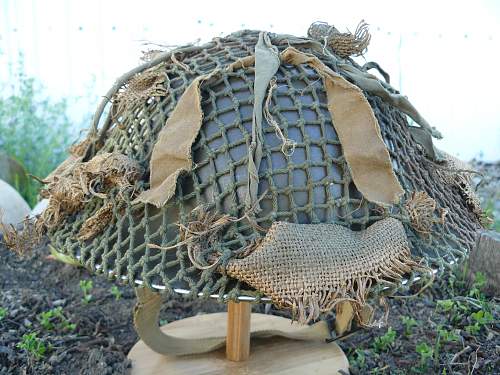
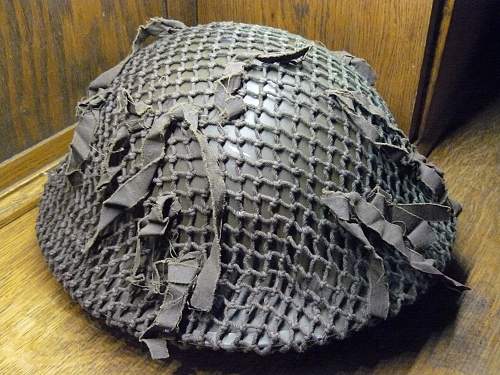
And or camouflage covers in various forms such as this hessian covers which would have been constructed at a unit level and or by local seamstresses and or tailors.
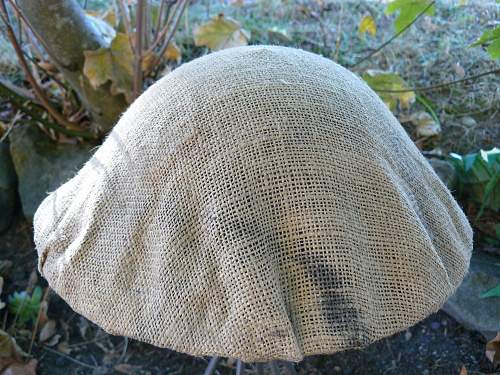
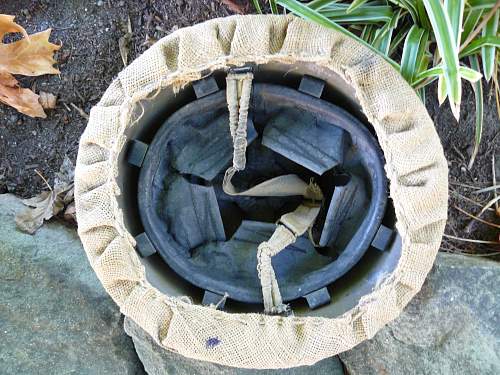
Or tropical tan/or tropical mosquitoes covers as shown below.
some of which have been none to have been period modified by having the mesh removed and will resemble the straight up tropical cover which IMO are much harder to source.
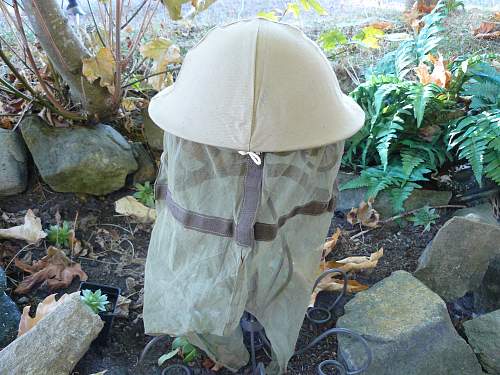
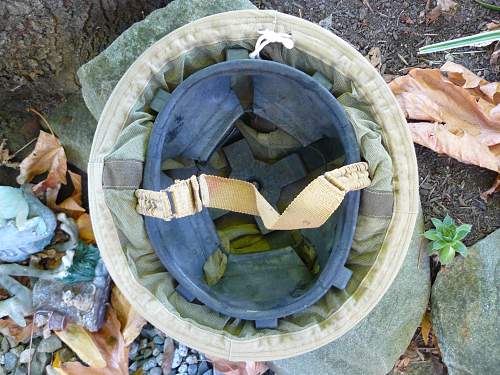

Securing bolt :
The liner retention nut and bolt ( securing bolt ) and dome style nut were manufactured from brass and were copies of the British Mk I style securing bolt all Canadian manufactured Mk II helmets were assembled with this style of bolt through out there entire 1940-1943 production run.
This is not to say that all Canadian Mk II helmets have this type of fastener on occasion examples can be found with other variations mainly British as of course helmets like anything else start to break down and needed to be repaired and or have components replaced and one must use what is available at the time these type of helmets will need to be scrutinized a little more to determine weather they have been field repaired and or messed with .
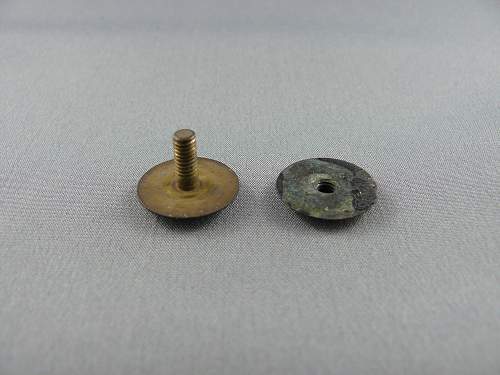
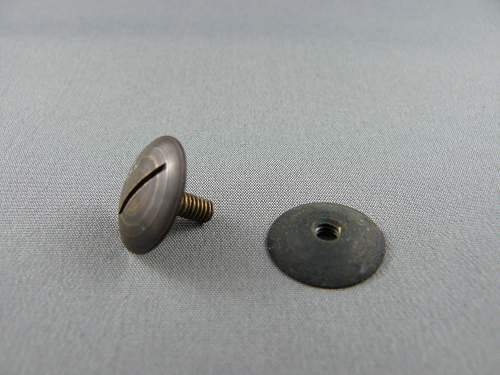
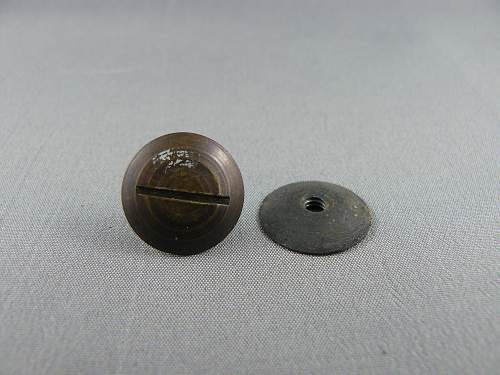
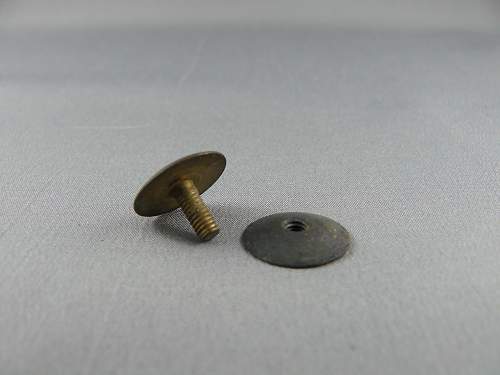
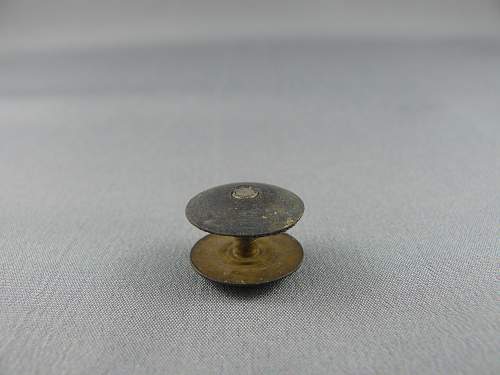
Crucifix Dome Pad:
The crucifix style dome pad that was manufactured in Canada was also produced by theViceroy manufacturing Company and was a direct copy of the British 1938 style and was constructed from rubber and covered in a thin piece of oil cloth there were no other variations and or design changes made through out there war time or post war production run.
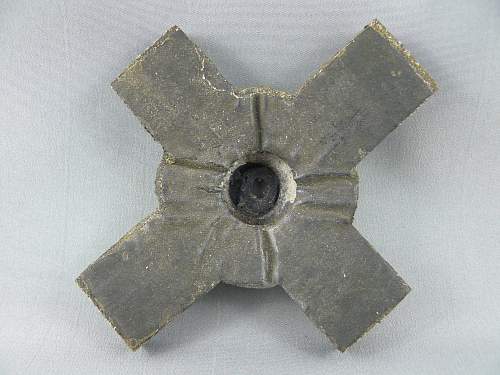
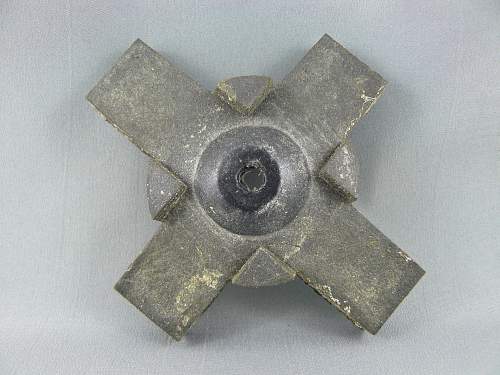
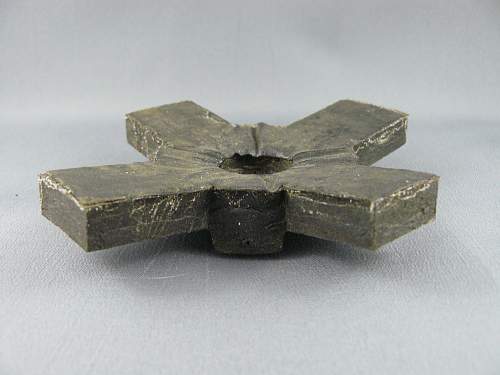
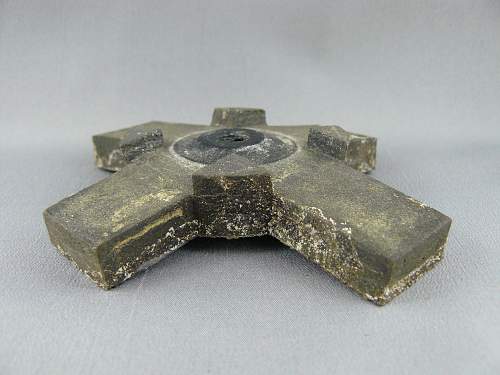
Chinstraps :
Backstay standards of Windsor Ontario was the sole producer of all Canadian chinstraps that were manufactured for the Mk II in Canada through out the 1940-1943 production run :
There was only one change instituted on the Canadian produced variation of the Mk II chin-strap.
The earliest chin-straps differed from the later Canadian pattern by having a blackened brass buckle with two closed centre struts, and only one piece of webbing joining the two sprung pieces.
After 1940, Canadian chinstraps had two strips of webbing, one of which has a free sewn-
folded over end, the other of which was sewn to the centre strut of a buckle the sprung canvas ends on the sides of the chinstrap were manufactured with non magnetic springs
1# Early first variation.
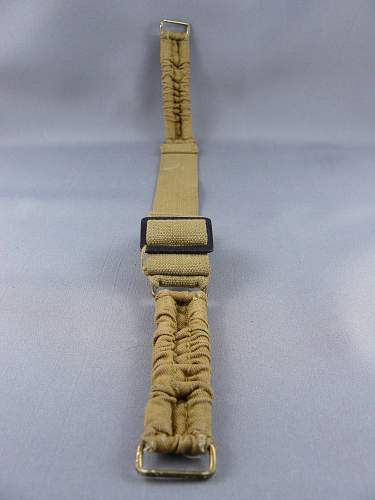
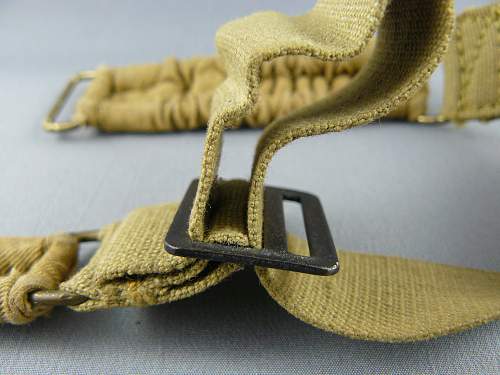

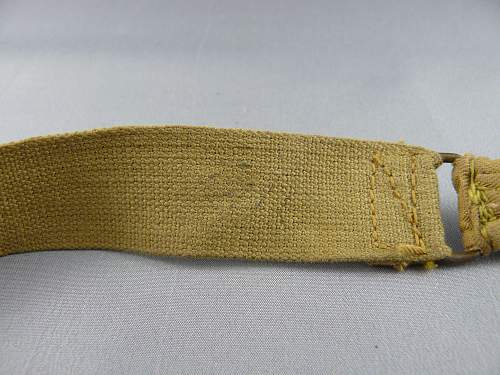
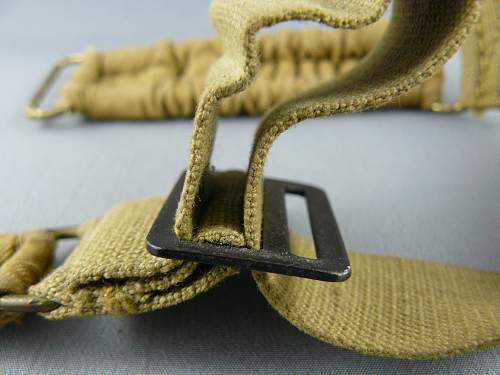
I think it is only fair to mention that there has been a long and on going debate concerning the first variation chinstrap shown above there are some Canadian collectors that believe these to be an early war time (1940) produced chinstrap and that they predate the standard Mk II chinstrap shown below .
And there are other Canadian collectors that believe these to be an early post war chinstrap that predate the OD green chinstraps produced in 1952 or 1953 please take note that the one shown above is manufactured from the same khaki colored material as the standard Mk II chinstrap and is ink stamped with the C-/l\ mark one must take in to consideration that the C-/l\ stamp was used for some time early post war till approx 1949.
I have two variations of this chinstrap with the closed center strut and the blackened buckle in my collection the one is a true khaki in color and bares the C-/l\ mark .
While the other I have was manufactured from webbing and material that is slightly greener in color and IMO not a true brown Khaki and the material used in the webbing is a slightly looser weave the second example I have bares the Canadian Government acceptance stamp which is with out a doubt post 1949 applied.
So now we come to the question's were there two variations of this chinstrap produced early war and post war,Were these chinstraps pulled from military stores and reissued post war and stamped as such I do find this a possibility as I have a standard war time produced Mk II chinstrap in my collection which bares the Canadian Government acceptance stamp,Or are they an early post war produced strap I am afraid I do not have the answer to these questions and the debate is on going you will have to draw your own conclusions .
2# Later variation
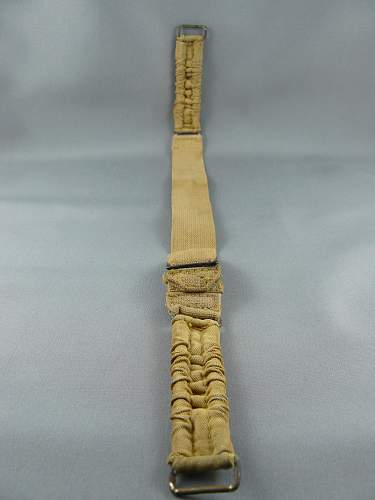
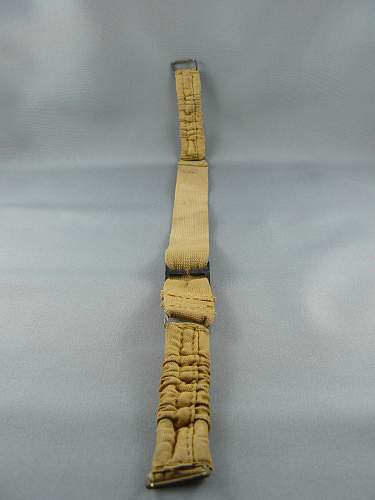
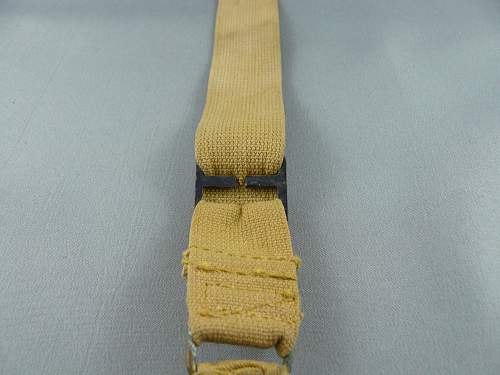

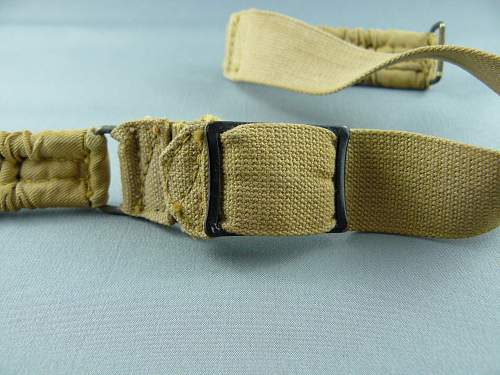
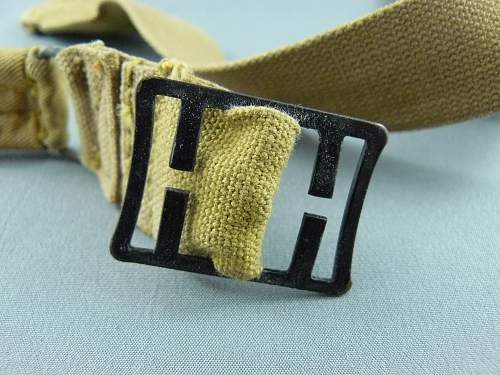
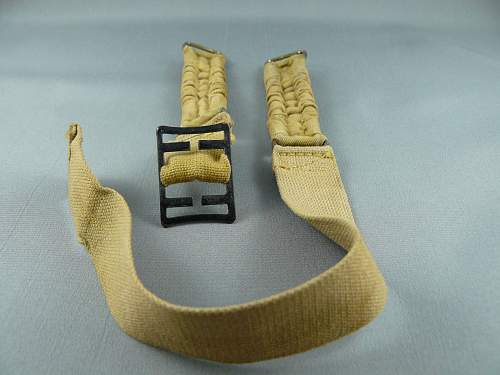
Mk II Liners :
All Canadian produced liners for the Mk II were manufactured by the Viceroy Manufacturing Company of Toronto Ontario (VMC) and were constructed with oilcloth for the head liner ,fiber for the liner bands and suspension,and a cloth inner padded ring for comfort ,with the exception of the buffers which were manufactured from rubber .
The first contracts were awarded in January of 1940 all Canadian war time produced liners should bare the manufacturers logo ( VMC ) followed by the designation stamp which will either be a Mk I or Mk II, size and the date embossed in the liner band it is not uncommon to find a white C-/l\ ink stamp on the interior stamped on the liner band and in some cases the inspectors ink mark can be seen as well stamped under the C-/l\ as well. The manufacturers mark and date codes on later war produced liners can at times also be found as well on the reverse sides of the liner bands and will not be evident till the liner is removed from the helmet for further inspection.
In July, 1941 a minor change was instituted in the Mk II linings produced by VMC they were fitted with steel wire clips to retain the rubber buffers in place on the lining band which would make for easier servicing and replacement
a further modification was introduced in late 1942 or early 1943; when the position of the buffers and placement of the vertical bands was altered to allow a deeper more comfortable fit. The linings with the buffer retention spring were designated the Lining Mk.II those without springs were retroactively designated the Lining Mk I.
1# Early 1940 dated Mk II liner take notice of the placement of the buffers on the vertical bands.
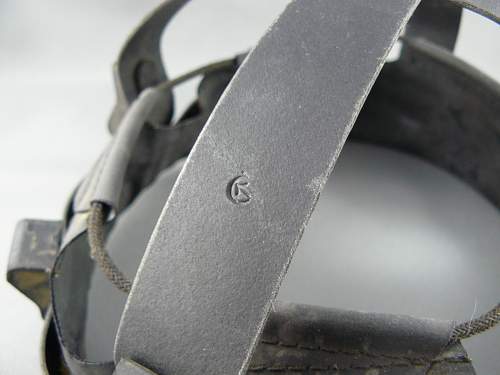
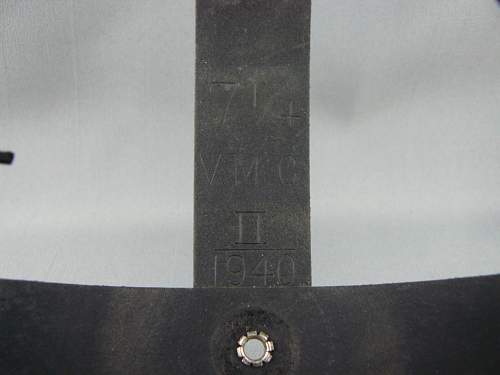
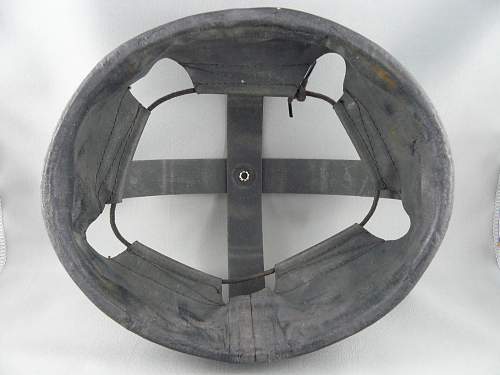
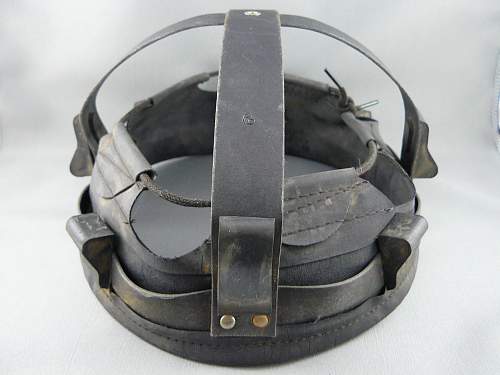
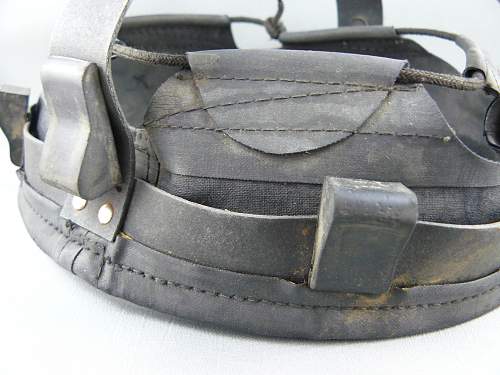

2# 1942 dated Mk II liner there is now an absence of buffers on the vertical bands and the position of the buffers on the horizontal band has been reversed.

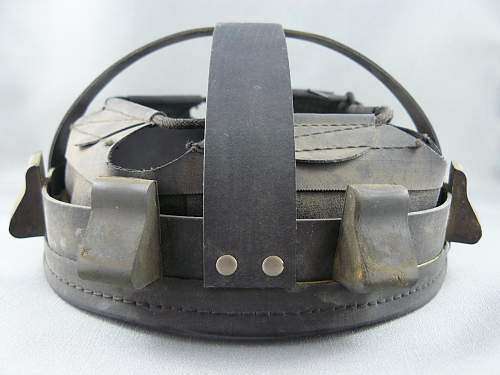
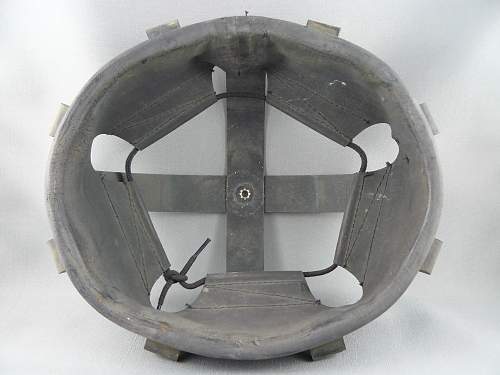
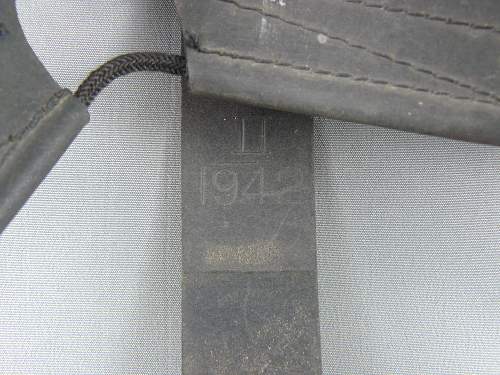
3# 1945 dated Mk II liner the buffers are now held in place by steel wire clips notice the placement of the buffers on the horizontal bands has again changed and the fiber cross bands are now longer to make for a more comfortable and deeper fit these changes were the last to be instituted in late 1942 or early 1943 .
The inspectors Identification number is preset ( 101 ) under the C-/l\ mark .
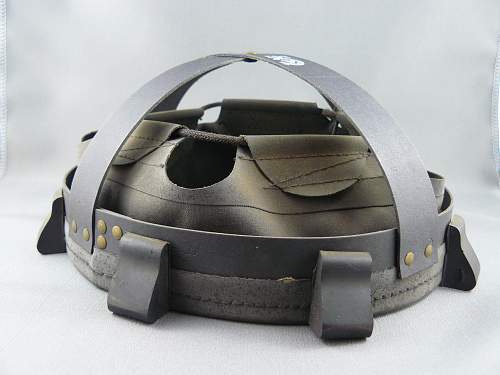
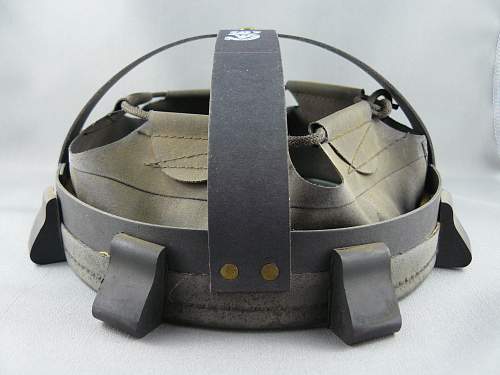
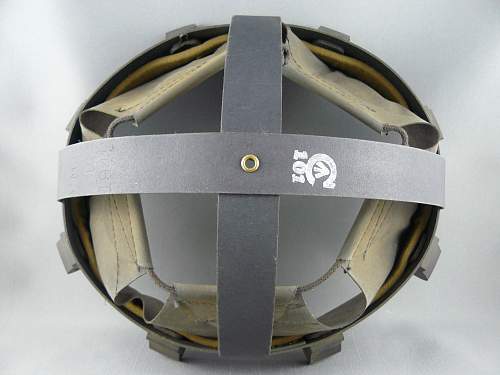

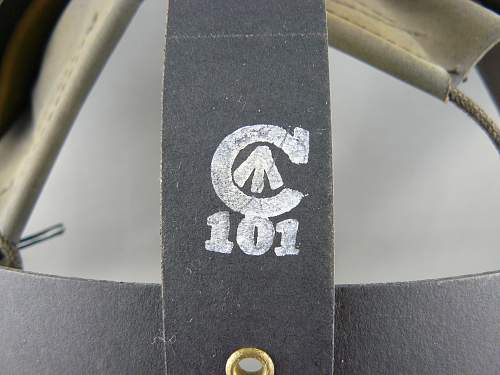
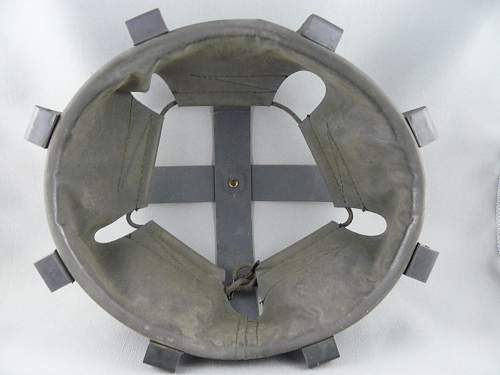
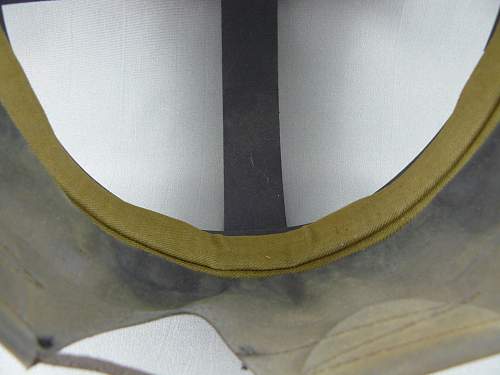

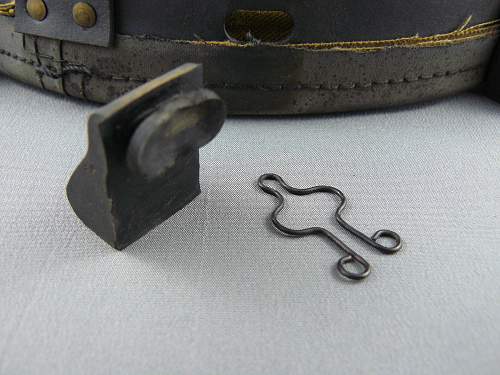

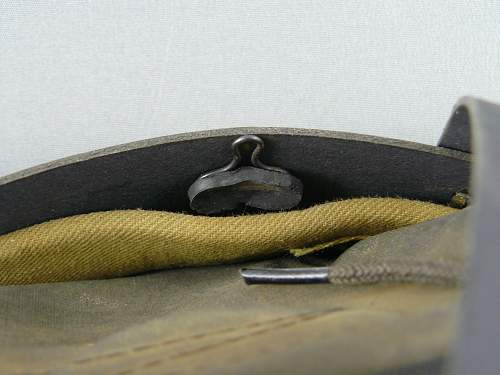
4 # Example of a 1941 dated VMC liner stamped with the Mk I prefix .
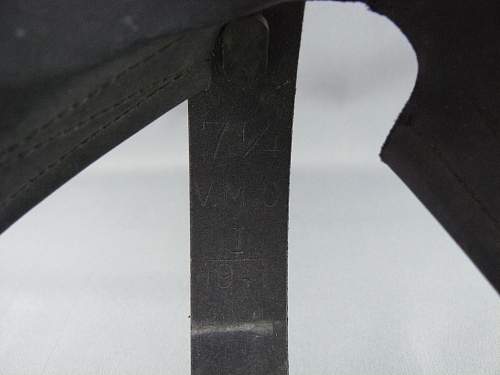
This particular section deals with Canadian Post War repainted and or refitted Mk II's and there components
This particular Mk II was produced by The Canadian Lamp and Motor Company (C.L./C.) and is dated to 1942 steel lot batch code 96, It is sporting a late war VMC 1945 dated liner and a early post war manufactured chinstrap that is very much like its early Canadian cousins with the exception of a couple of distinct difference beyond the obvious change in the color of textiles used in construction( OD green material) the steel springs that were used in the sprung ends were built with sub standard materials and have a tendency to rust heavily and break and or cause the textiles in the chinstrap to start to rot do to the corrosive nature of the effects of rusting and oxidization and the chinstrap is constructed out of one piece of webbing and folds through the buckle to make adjustments to size.
You may have noticed this particular helmet has been repainted in a gloss OD green this color and a semi gloss OD green were adopted in and around mid 1952 to the best of my knowledge,
The Canadian army at this time was undergoing restructuring and part of this plan involved repainting much of its mobile and field equipment the same color as seen on this particular Mk II there are many post war examples out there as well that have there original war time dated liners and chinstraps and or post war manufactured liners and chinstraps or a mix of both the Mk II was used by the Canadian Army till Sept, of 1960 till it was officially replaced by the M-1.
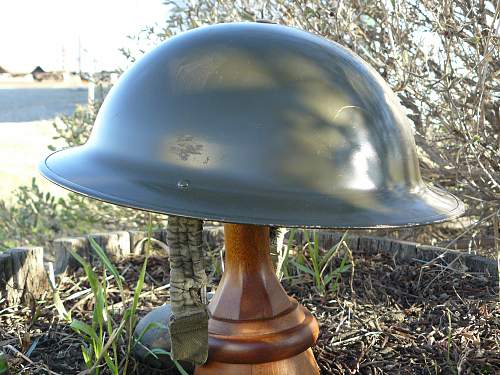
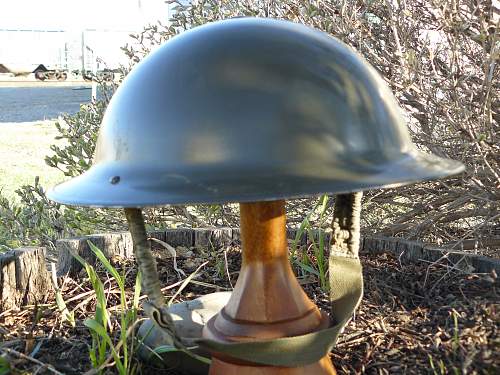
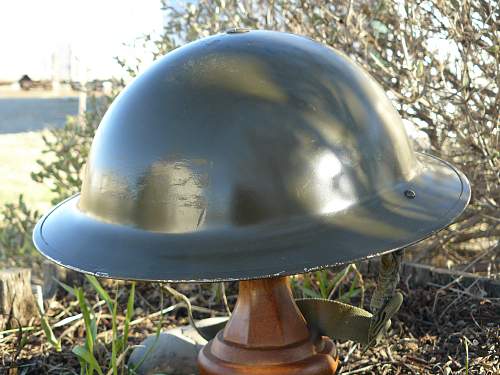
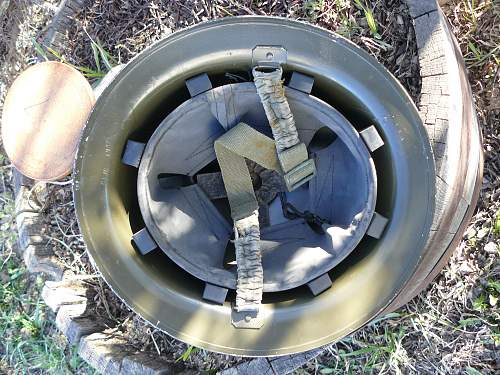
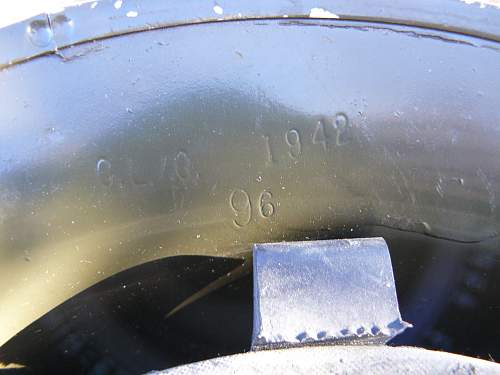
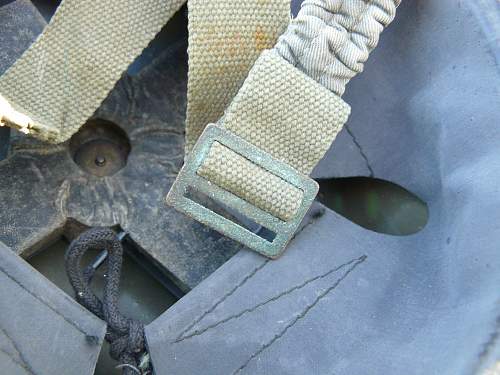
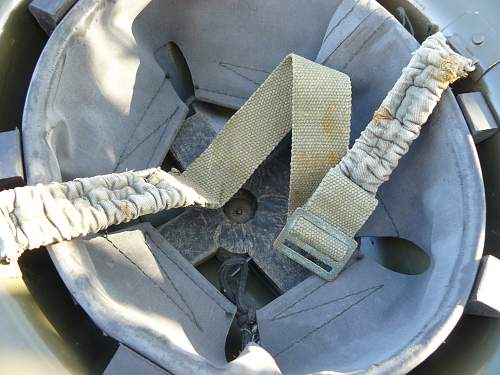

Post war Liners and Components
With the onset of the Korean War Canada again found it self in need of replacement components for the Mk II so another production run was ordered for liners, crucifix dome pads and securing nuts and bolts as far as I can tell there is no difference between war time produced Crucifix pads,securing nuts and bolts and there post war produced counter partsViceroy Manufacturing Company was again contracted to manufacture the liners and crucifix pads .
These liners were for the most part manufactured to the same specs as the later war produced liners ( 1942-1943 ) and would appear to be exactly the same as the 1945 dated liner shown above with but two exceptions there is now an absence of the manufacturers mark ( VMC ) and the date code just the size stamp would now appear on the post war produced liners please take note that the C-/l\ stamp is still being used on this example instead of the Canadian Government acceptance stamp.
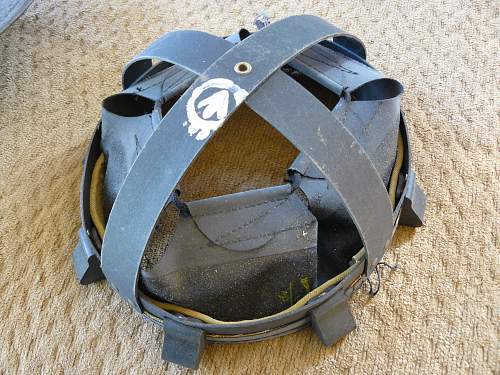

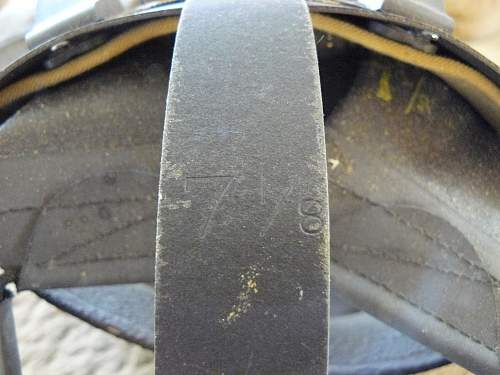

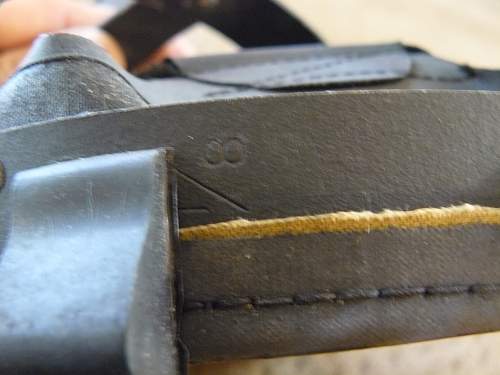
Canadian Post War Chinstraps.
There were two variations of chinstraps produced in Canada during the post war years the first style is some what similar to the early first variation chinstrap with the closed center strut and blackened buckle that was manufactured for a short time in 1940 note that these were constructed from OD green material instead of the khaki material as found on war time produced chinstraps these can be found with either the C-/l\ or the Canadian government acceptance stamp found on them these were thought to be produced in 1952 or early 1953
The second variation was as well manufactured from an OD green colored webbing and has a slider style metal buckle note the absence of the sprung ends as found on earlier manufactured chinstraps these were thought to be produced in the late 1950's or early 1960's and can be found with the Canadian Government Acceptance stamp on them as seen on this early chinstrap with the closed center strut.
1# Early first variation .

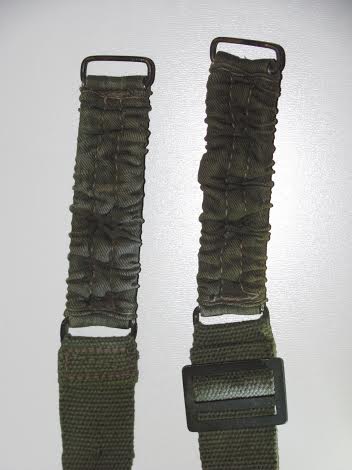
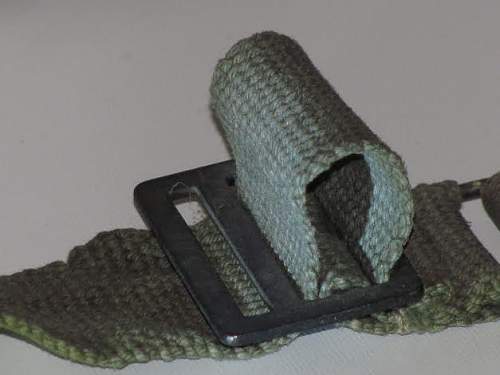
2# Second later variation
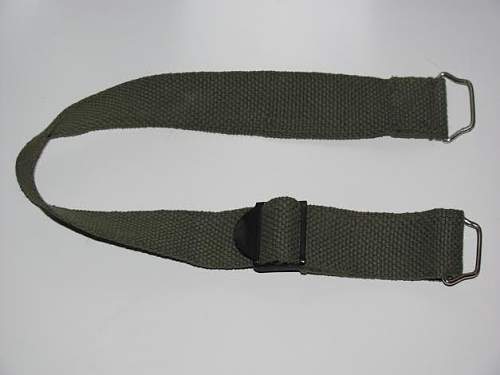
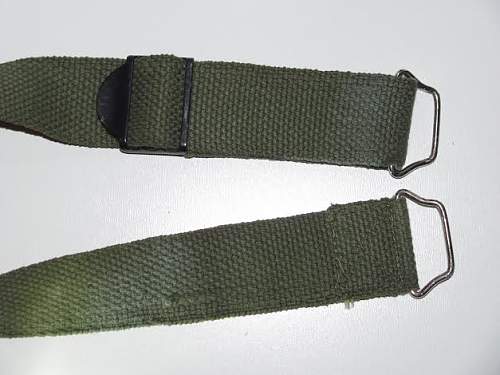
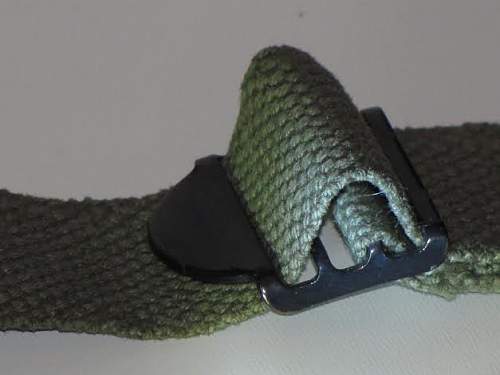
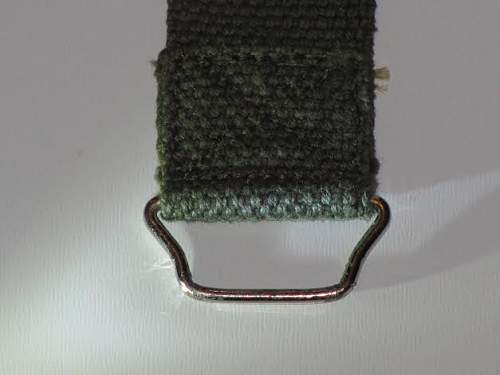
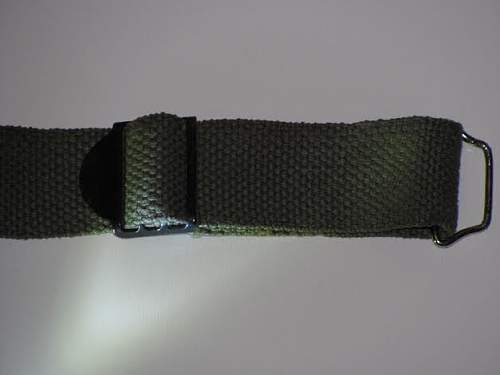
Photo credit for the two Canadian post war chinstraps to Piotrek
Canadian Regimental Flashes and Unit Designations
Regimental flashes and unit designations can be seen applied to the left side of some Canadian Mk II's these can either be found in the form of a water slide decal and or are hand painted at a unit level as is the same with Canadian medic helmets there are period images that support that these can be seen in numerous configurations
I have a few examples of flashed helmets in my collection the first being to the Royal Canadian Electrical Mechanical Engineers which has been over painted in post war OD green
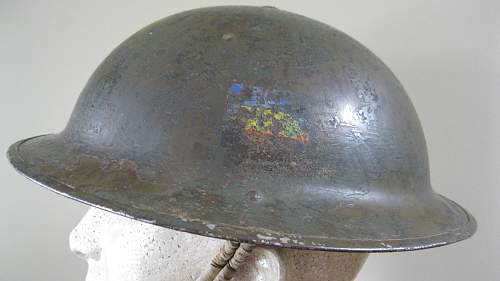
The second example is war time flashed to the Winnipeg Grenadiers .
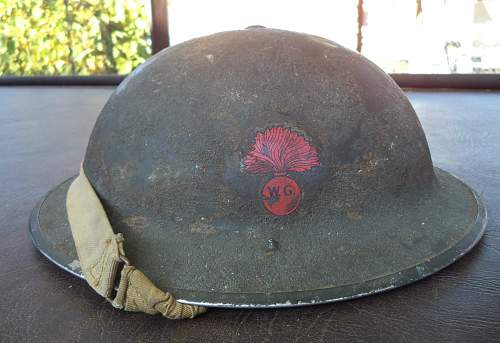
1943 dated C.L./C. Canadian Four Panel Medic
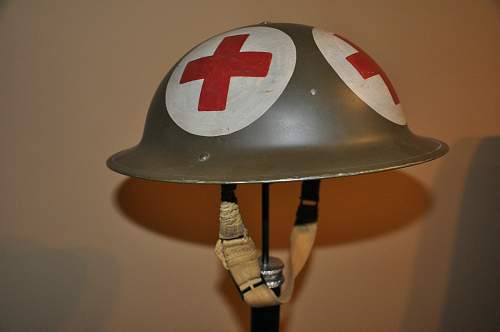
1942 G.S.W. with early type of hand painted flash to the Black Watch
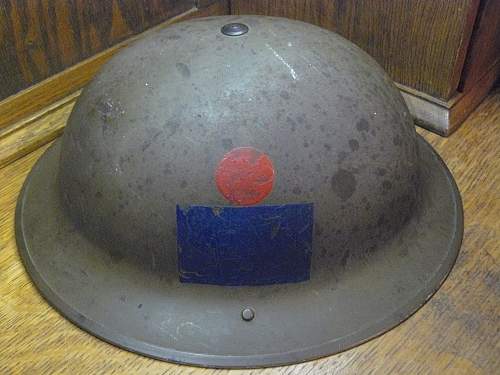
1941 C.L./C. flashed to the Regimental Police

You will find a good many unit flashes can be viewed in the link below .
"Helmet Flashes" decals markings Helmet Mk II
All of the helmets and components shown in the blog above are from my personal collection with the exception of the the detailed images of the one chinstraps shown in the post war component section which were graciously loaned to me by a friend and fellow collector.
Regards Mark
Nice blog Mark. :-)
ReplyDeleteVery good old chap!
ReplyDeleteCheers Gents I hope you found it helpful and informative
ReplyDeleteVery interesting! Thank you!
ReplyDelete